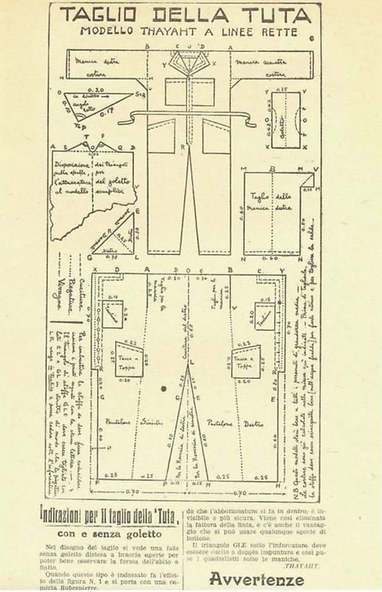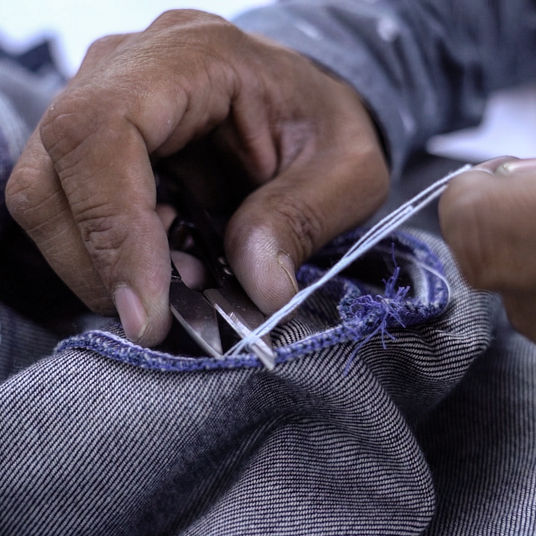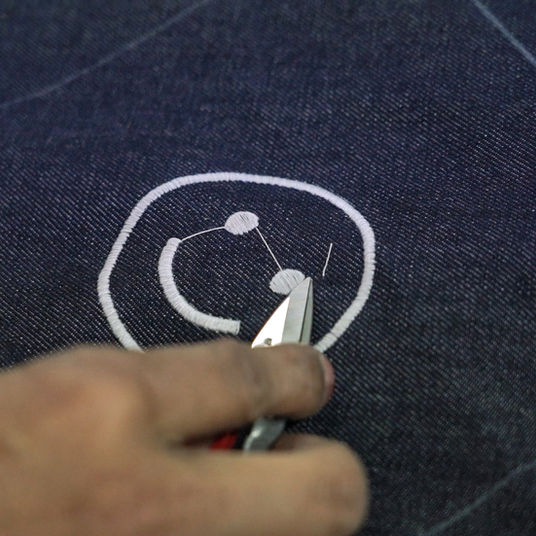TwoTa
The TuTa Reimagined for the Modern World, by Decode x Soorty
In a collaborative effort to outfit the Kingpins Show staff for the April 2024 edition, Soorty and Decode joined forces to create zero waste uniforms drawing inspiration from Thayaht's jumpsuit Tuta (more about the history of the iconic piece below). From fabric selection to processes, pattern making to end production, meticulous attention was paid to minimize waste at every stage.
In 1920, Thayaht revolutionized the fashion landscape with his design, inspired by the winds of change sweeping across post-war Europe. Born out of necessity and creativity, his jumpsuit named the Tuta transcended elitist fashion norms, embracing simplicity and accessibility for all. Building upon Thayaht's visionary legacy, the TwoTa emerges as a contemporary reinterpretation rooted in innovation and sustainability. Over a century since its inception, the spirit of its timeless design lives on, reimagined for the modern world.
In a world where conscious consumption is paramount, we uphold responsible manufacturing with every stitch of the TwoTa:
For the project, we selected one of Soorty’s best-selling authentic character denim fabrics, Splash ZWW Classic Blue - a rigid fabric that blends SOCI and Second Life PCWTM, Soorty’s own organic and recycled cotton.
The dyeing and finishing of the fabric were conducted using our unrivaled Zero Waste Water technology, which reduces water usage by an average of 90% compared to conventional methods.
The breathable fabric is light and airy, offering ease of wear, while showcasing a bright blue color that empowers Thayaht’s vision of color choice.
A zero waste pattern was engineered by Decode for the garment production.
TwoTa embodies a fusion of heritage and innovation, marrying timeless design with contemporary sensibilities - sustainability, inclusivity, and a reverence for the pioneering spirit that continues to inspire us all.

THE STORY OF TUTA
The Italian word for overalls.
British English: overalls /ˈəʊvərɔːlz/ NOUN.
Overalls consist of a single piece of clothing that combines trousers and a jacket.
In Italian, the word tutta means all-in-one/whole/a unified thing.
Some suggest that the missing “t” in Tuta is the shape of the Tuta itself.
It has been 104 years since the launch of what we now call the jumpsuit. Its inventor was Italian futurist artist Ernesto Michahelles (aka Thayaht) with his younger brother Ruggero Alfredo Michahelles (RAM).
In 1920, Thayaht introduced his design following WWI and the Russian Revolution of October 1917. The pattern was published by the newspaper La Nazione, aiming to make the TuTa accessible to all instead of appearing solely in high-fashion magazines, thus countering the oligopoly of major French fashion houses. It was intended as a practical item of clothing for everyday use by everyone.
In his last interview entitled "The TuTa was born in the study of a Futurist” Thayaht writes:
"... It was June and hot in Florence. The fabrics were expensive and the movement of the crowds was grey for the absolute impossibility of changing the old clothes with something new, I thought how the color element could cheer up and agitate as an optimistic element on the Man and the Woman who wore it… It needed something to break the habit of dull colors to the mixed colors of brown, grey and black.
I had in my eyes the festive colors of the Impressionists. One day, I saw in a showcase of cotton fabrics and hemp in bright colors and cheap. I took some samples and got to work. The packaging had to be minimally cost-used and enough to be done at home, so that the new type of dress was within the reach of the masses as I had dreamed of it.
I had the cooperation of my brother Ruggero. Then I mobilized some friends, skilled with the sewing machine and I made myself pack the first white TuTa by myself cut that can be considered the prototype for those perfected ones that came later. Then the design of the geometric model was printed, with the cutting explanations, of this dress "all in one piece", in the form of “T"
From that moment it was officially born in the history of Italian Fashion the so-called "Made in Italy" that the world still envies us.”
The Tuta was designed as a utopian garment for all people, for all situations, affordable, easy to sew and cut with minimal fabric wastage. Its simplicity and versatility were in contrast to the haute couture of the day, highlighting a social and political significance. It also aimed to uplift people, offering an alternative to the limited color palettes in the market.
Thayaht published the pattern with its cutting and sewing instructions in the Florentine newspaper La Nazione, proclaiming it as 'the most innovative, futuristic garment ever produced in the history of Italian fashion.













